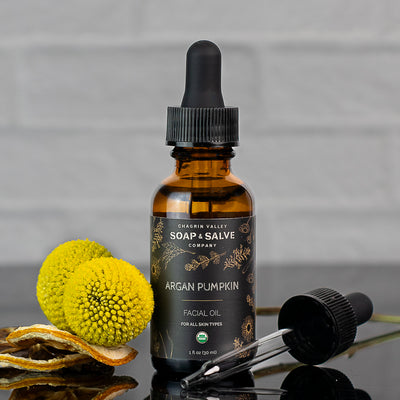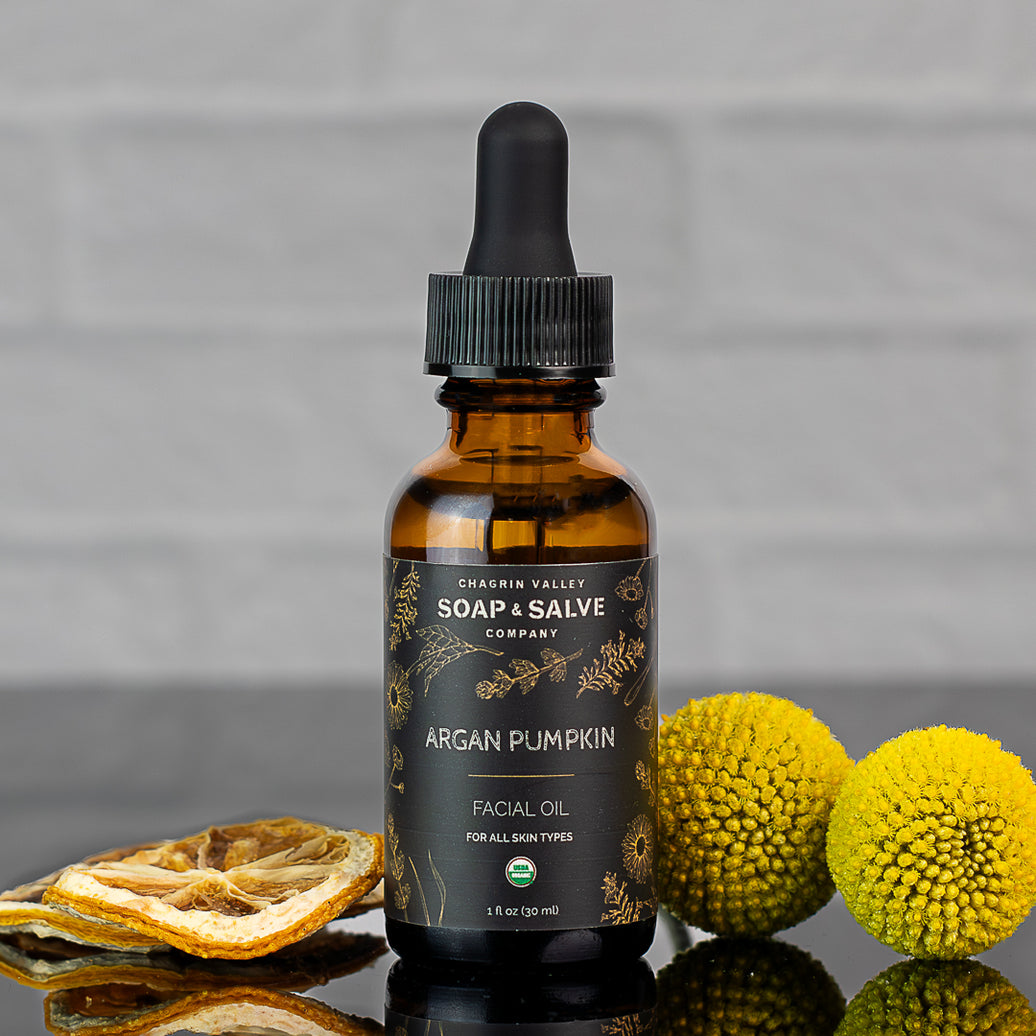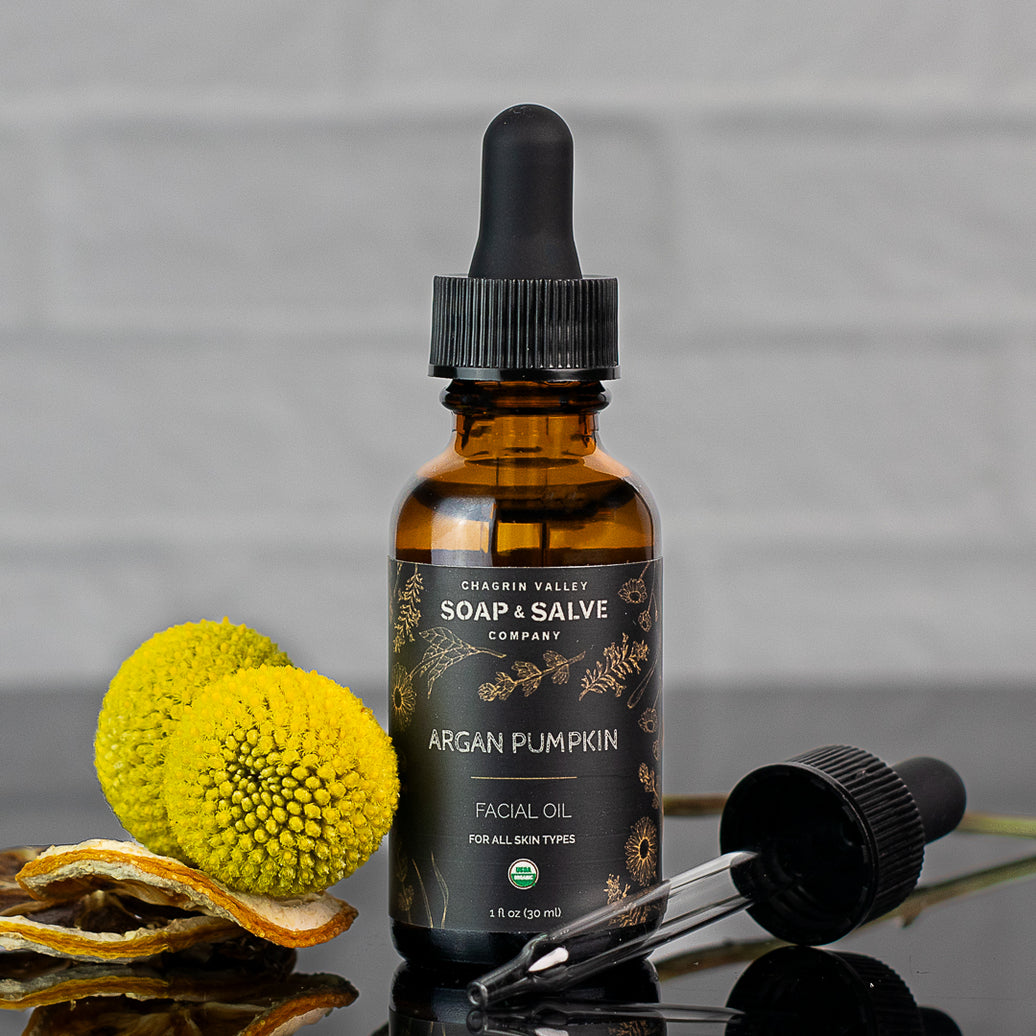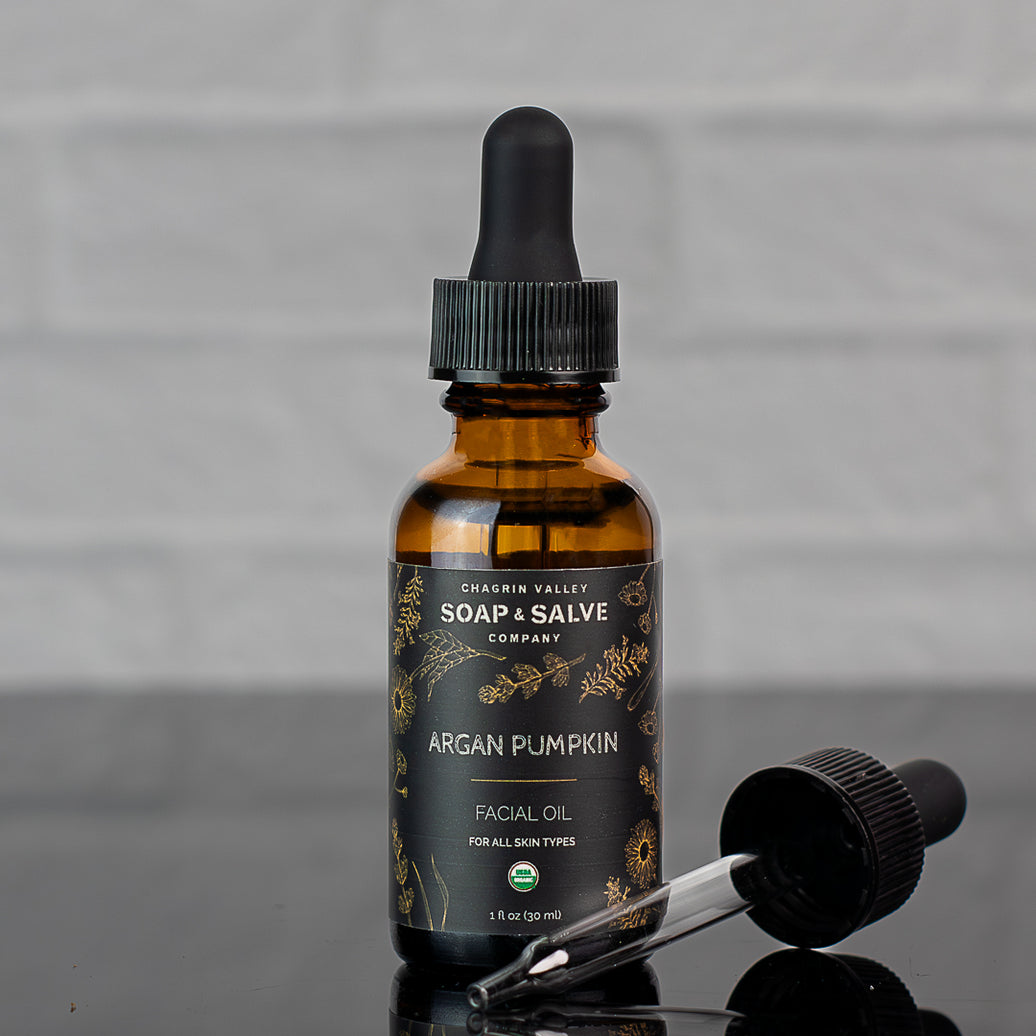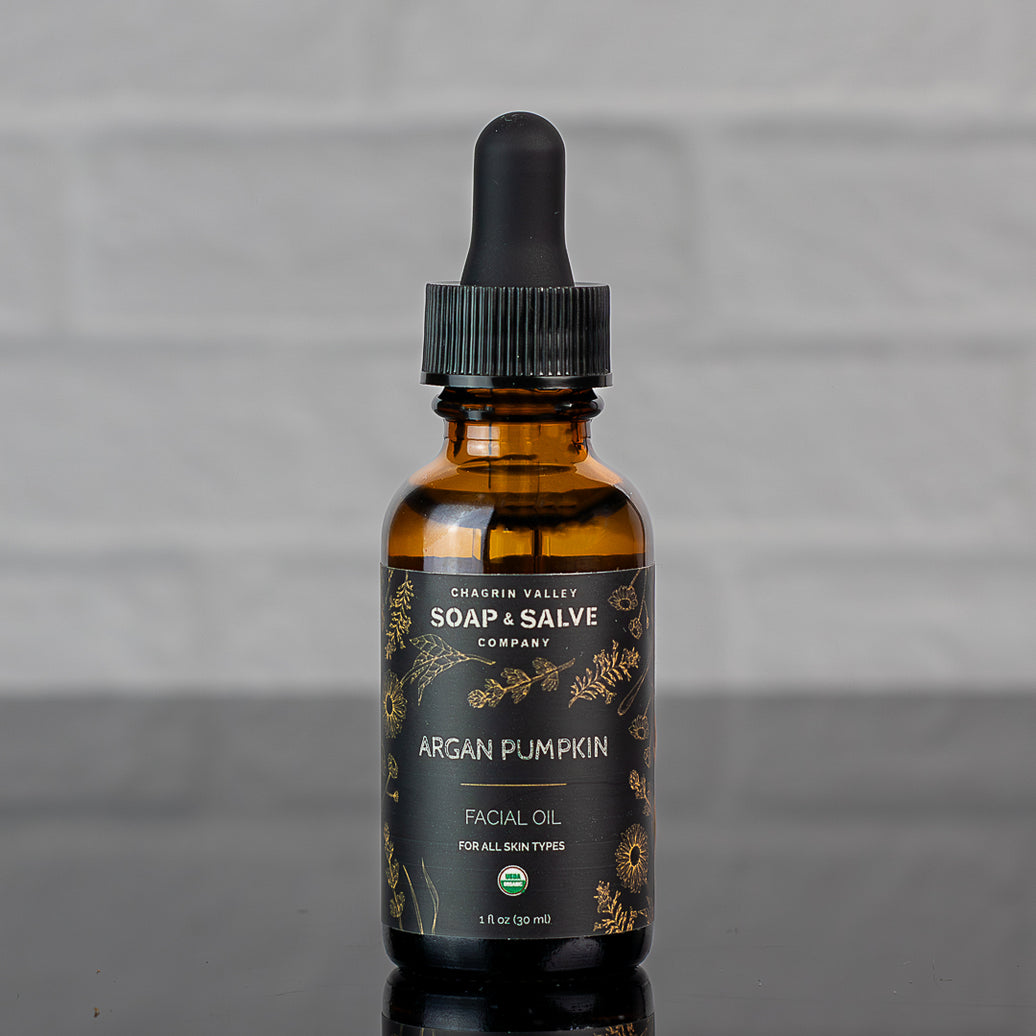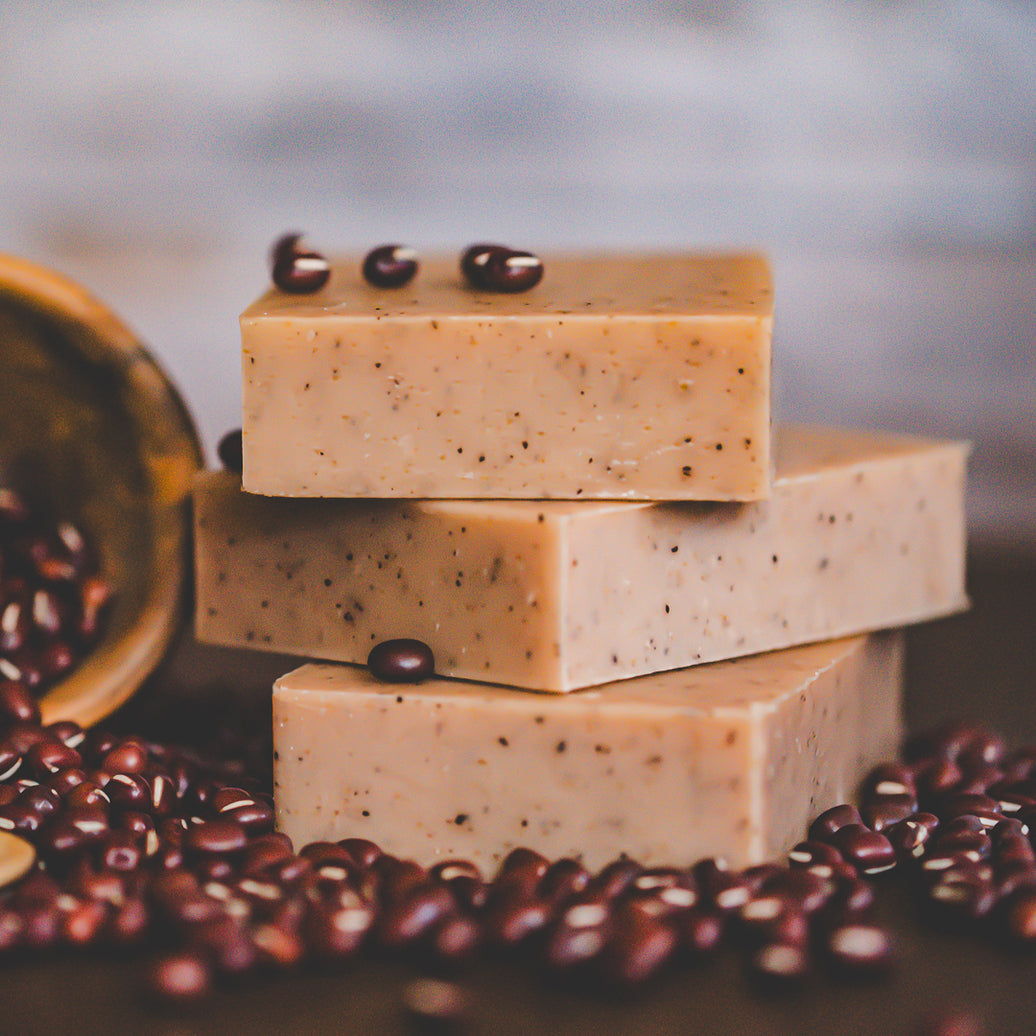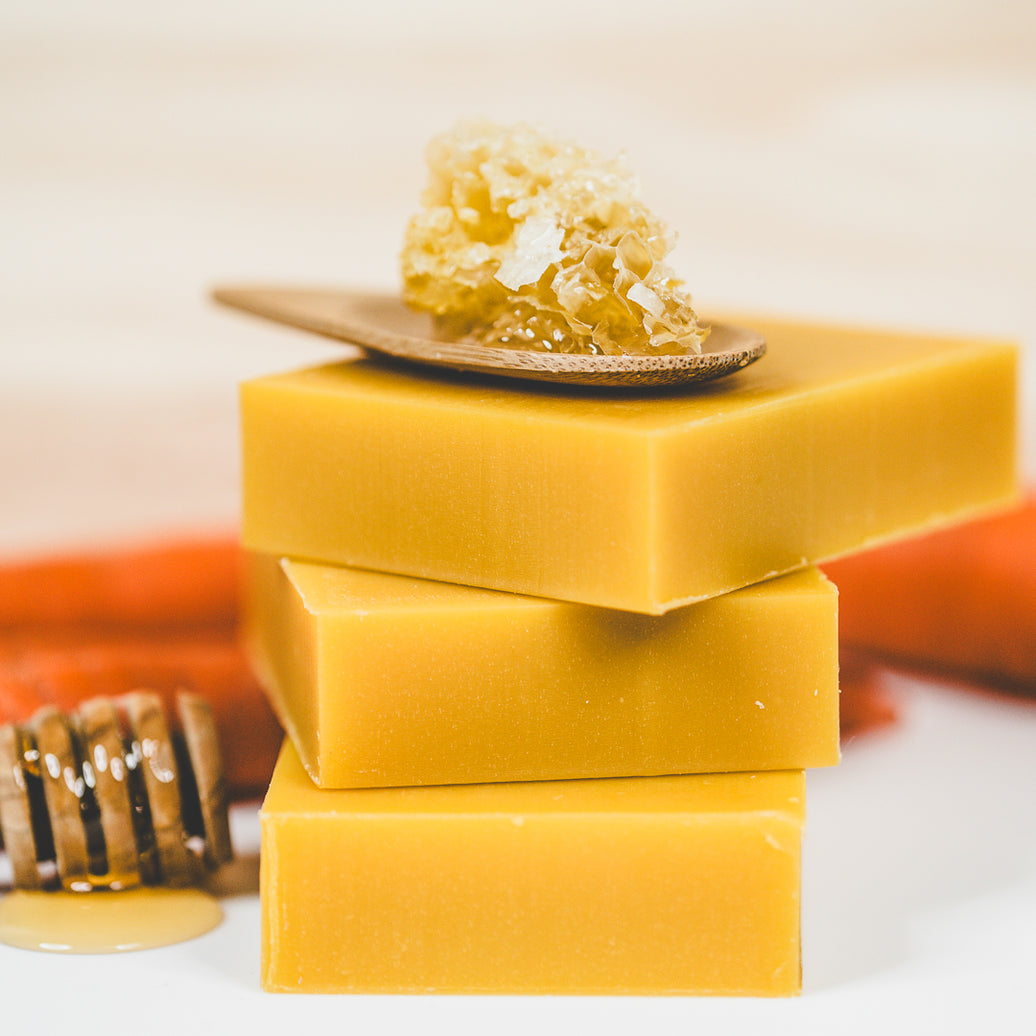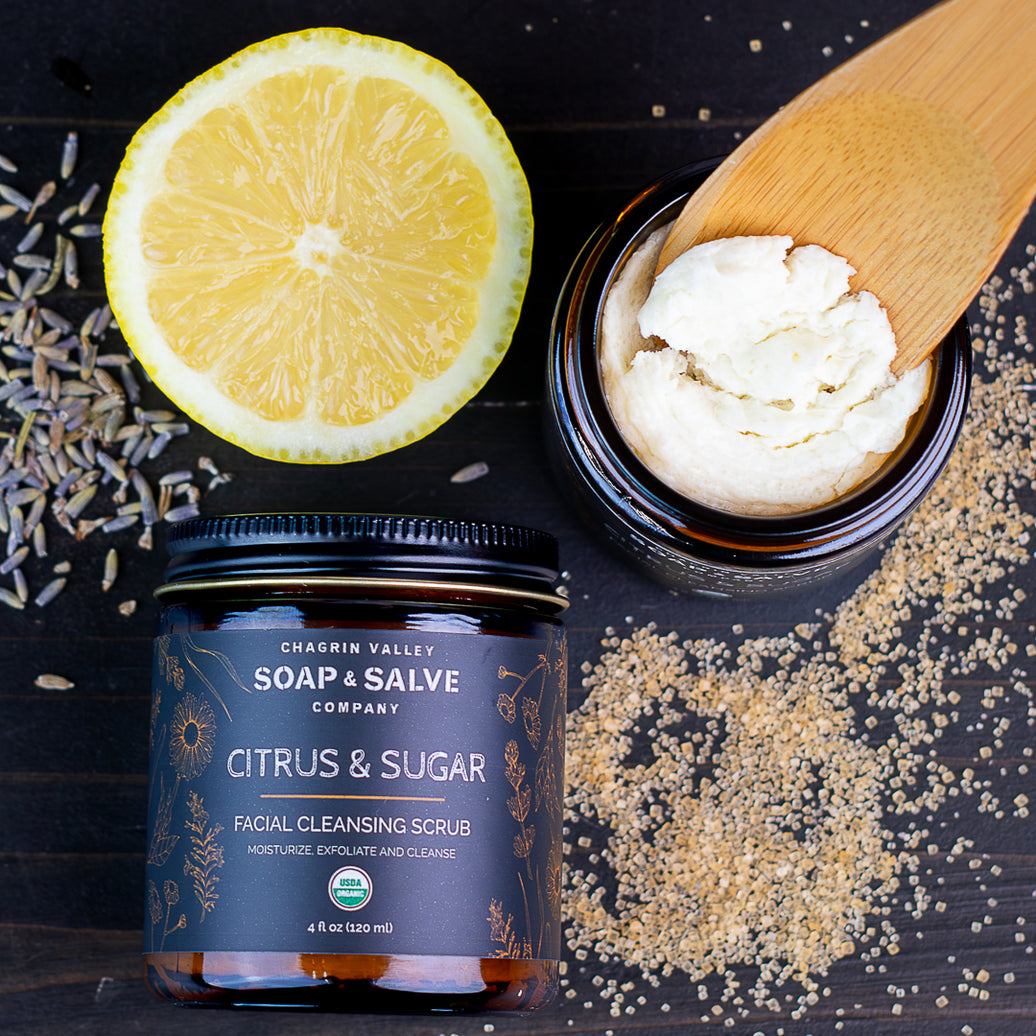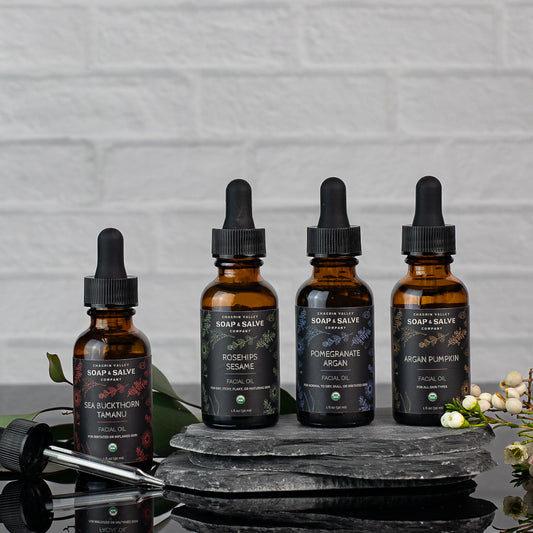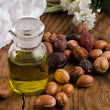
Aceite facial: Argán Calabaza
Aceite facial: Argán Calabaza
Aceites profundamente nutritivos como el de argán, semilla de calabaza, jojoba y girasol con infusión botánica, ayudan a restablecer un equilibrio saludable en la piel normal o grasa al regular la producción natural de aceite.
- Out Of Stock






Product Overview
Good For: All Skin Types
Our lightest face oil, the Argan Pumpkin is great for skin that is sometimes shiny and sometimes needs moisture, thus needs help balancing oil production.
Proper hydration is key to retaining a healthy glow. The most basic function of a facial oil is to hydrate and soften the skin by preventing water loss.
People with oily skin are often told to use oil-free moisturizers with harsh ingredients in an attempt to get rid of oily shine. Harsh ingredients can strip the skin of its natural oils which triggers the skin to overcompensate by producing even more oil creating a vicious cycle. A wholesome face oil can actually help balance skin oil production.
This luxurious blend of unrefined organic oils and soothing botanicals is formulated for all skin types.
Argan Oil is prized for its ability to improve the quality of skin. Rich in vitamin E, natural squalene, phytosterols and essential fatty acids, it can help reduce the appearance of wrinkles and fine lines. It contains natural anti-inflammatory agents that help calm inflamed skin and sebum regulating properties that help reduce the appearance of blemishes.
Pumpkin Seed Oil is a highly nourishing and emollient oil rich in vitamin E, a powerful antioxidant. Rich in essential fatty acids that regulate skin oil (sebum) production, it is great for both oily/acne-prone skin and dry damaged skin. It helps combat fine facial lines and may be helpful for inflamed skin.
Tamanu Oil is readily absorbed into the skin, helps improve the appearance of scars, and encourages healthy skin growth to aid in healing skin conditions. Tamanu oil is a remarkable topical healing agent with skin healing, antineuralgic, anti-inflammatory, antimicrobial, antibiotic, and antioxidant properties. The oil has been well researched, and the evidence of its ability to heal damaged skin is quite impressive. Tamanu is a costly oil. It takes 20 pounds of Tamanu fruit, the amount that one tree produces annually, to yield just ONE pound of oil!
Jojoba Oil closely resembles our own skin sebum and is considered nature's most effective natural moisturizer. It is so great for balancing oil production that it actually helps your skin find its own natural balance. It penetrates the skin easily, has anti-inflammatory actions, and can be used on oily and acne-prone skin. It is great for maturing skin and is gentle enough for sensitive skin.
Sunflower Oil, one of the most moisturizing vegetable oils, is easily absorbed and can be used on all skin types. It is rich in essential fatty acids and vitamin E making it especially helpful for dry or delicate skin. Its low comedogenic score means that it is less likely to block pores which could lead to blemishes.
The sunflower oil we use in our Argan Pumpkin Face Oil is infused with soothing and healing organic botanicals.
All Natural, Certified Organic, Vegan, Cruelty-Free, Non-GMO
Why should you use a facial oil? Scroll down a bit and read the FAQ to the right!
Packaged in a 1 oz. recyclable glass bottle with a glass pipette dropper.
How To Use
The Best Way to Apply a Face Oil
Less is More
For those who have tried facial oils but do not like them, often an incorrect application method is the problem. Since facial oils are very concentrated, a little goes a very long way and less is usually better than more.
If your skin feels oily hours after application, you should reconsider your technique.
Can a face oil replace your moisturizer? For some yes, but for others maybe not. If you have very dry or maturing skin a face oil alone may not contain enough of the "heavier" ingredients found in an organic oil-based moisturizing cream. The two products play different moisturizing roles and support each other.
For my 70 year old facial skin, a face oil alone is enough during summer months but not during the drying winters. If you are going to use both, apply the facial oil first and allow a few minutes for it to absorb before apply your face cream.
Is Your Face Ready?
The best way to apply facial moisturizers is on freshly cleaned, warm and damp (not wet) skin. Clean skin allows oils to better penetrate deep layers and stop leftover makeup from clogging pores.
Creams and oils work best with a little damp moisture. Facial oils are better able to lock in moisture when the skin is more pliable after a warm wash and damp skin also ensures that the oils spread evenly and absorb effectively into your skin leading to more hydrated, plumper skin.
Note that your skin should not be wet, just a bit moist, or the skin will be unable to hold the oil. Remember that oil and water do not mix!
How Much to Use
Again, facial oils are very concentrated, so start slowly. The key is to use them sparingly.
The recommended amount for your décolleté, neck, and face is about 4 to 6 drops. If doing your face only, you need about 2 to 3 drops of oil per treatment. If your skin is extra dry a couple more drops may be helpful. Just don’t overdo it. This might appear to be a very small amount but start out small, you can always add more.
Application Technique
Now that your skin is ready you need to choose an application method.
While many people have their own special technique for applying face oil, here are two favorites. Always be sure that your hands are clean and remember to begin with clean, damp skin.
Dropper Method
 We suggest applying our facial oil directly to your skin with the dropper. Placing the oils on your hands first will probably give you soft hands, but you want to get the most benefit for face!
We suggest applying our facial oil directly to your skin with the dropper. Placing the oils on your hands first will probably give you soft hands, but you want to get the most benefit for face!
While it may be called a facial oil, the sensitive skin on your neck is especially prone to signs of aging or dryness.
Begin with only a drop on each cheek, one drop on your neck, one on your décolleté, and one on your forehead, focusing on problem areas (remember you can always add more if needed).
If you choose to do your face only, place one drop on each cheek and one on your forehead. If you have an oily T-zone, but dry flaky cheeks, limit your facial oil application to dry problem areas only.
Patting the oil onto the skin with your fingertips is often thought to be more effective than rubbing the oils into your skin. Patting can aid in oil absorption and nourish deeper skin layers. But using a gentle "rub" in sections will also work, especially if time is a factor.
EYES: Take extra care around the eye area since rubbing or pulling that delicate skin may help encourage those annoying eye wrinkles. My eye technique:
- I place less than pea-sized amount of oil on my left ring finger to use a my "dipping pot".
- Then I use the ring finger from the other hand to dab small amounts of oil gently around the eyes.
- Using a dabbing motion, I gently smooth the oil into the skin, beginning at the inner corner of the eye to the outer corner of the eye.
When applying moisturizer to your neck or décolleté, massage in an upward soft stroking motion, until completely absorbed.
A face oil is a great product to use with facial massage. Using small circular strokes in an upward, outward motion, massage slowly and gently with your oily fingertips until most of the oil has been absorbed. The gentle massage will also give your skin a nice circulation boost and can help with lymphatic drainage.
TIPS:
- Any oil left on your fingers can be used anywhere that needs some extra TLC, like the ends of your hair or your cuticles.
- If your skin is very dry it may need an additional application during the day. We suggest taking a tiny spray bottle filled with clean water to give your face a quick mist before reapplying.
Palm Method
While your skin is still slightly damp, place a few drops of face oil in the palm of one hand and then warm the oil by gently rubbing the palms of your hands together. Then press both your palms onto your face with firm but gentle pressure and hold for a few seconds. Then gently massage until it feels absorbed. Some believe that this warming process helps to better activate all the goodness in your oil and enhance absorption.
When To Use a Facial Oil
It is usually suggested that a facial oil be used in the morning. If your skin is extra thirsty, apply the face oil and allow a few minutes for it to absorb. Then use your natural cream moisturizer as usual for extra hydration.
There is a debate as to whether you should apply moisturizers at night. You need to pay attention to YOUR skin!
One school of thought is that you should not moisturize at night. While you sleep skin cells are hard at work naturally repairing, regenerating, balancing oil production, and flushing out impurities.
Applying moisturizers may prevent your skin from breathing, interfere with the skin’s natural regenerative activities, and may cause your skin to become dependent on moisturizers.
The other school of thought is that since cell repair and regeneration is higher at night, skin loses more moisture and needs the extra moisture. Also, since the skin’s ability to absorb ingredients peaks at night, your skin may be able to better absorb the nourishing, moisturizing ingredients.
When applying a face oil at night, we recommend applying the oil at least 20 to 30 minutes before going to bed. The oil needs time to soak into your skin, rather than into your pillow.
If you choose to moisturize day and night, a light facial oil may be better than a heavy cream. Just remember that your skin needs time to breathe. Using too much over time can make your skin lazy. Over moisturizing signals your own sebaceous (oil) glands to slow down natural moisture production, which can result in chronic dry skin.
If you have very sensitive skin or are simply trying a new product for the first time, we always recommend doing a patch test.
For external use only. Discontinue use if irritation occurs. Best if used within 6 months of opening.
For more detailed information about face oils please read our blog, "What are Facial Oils and How to Use Them"

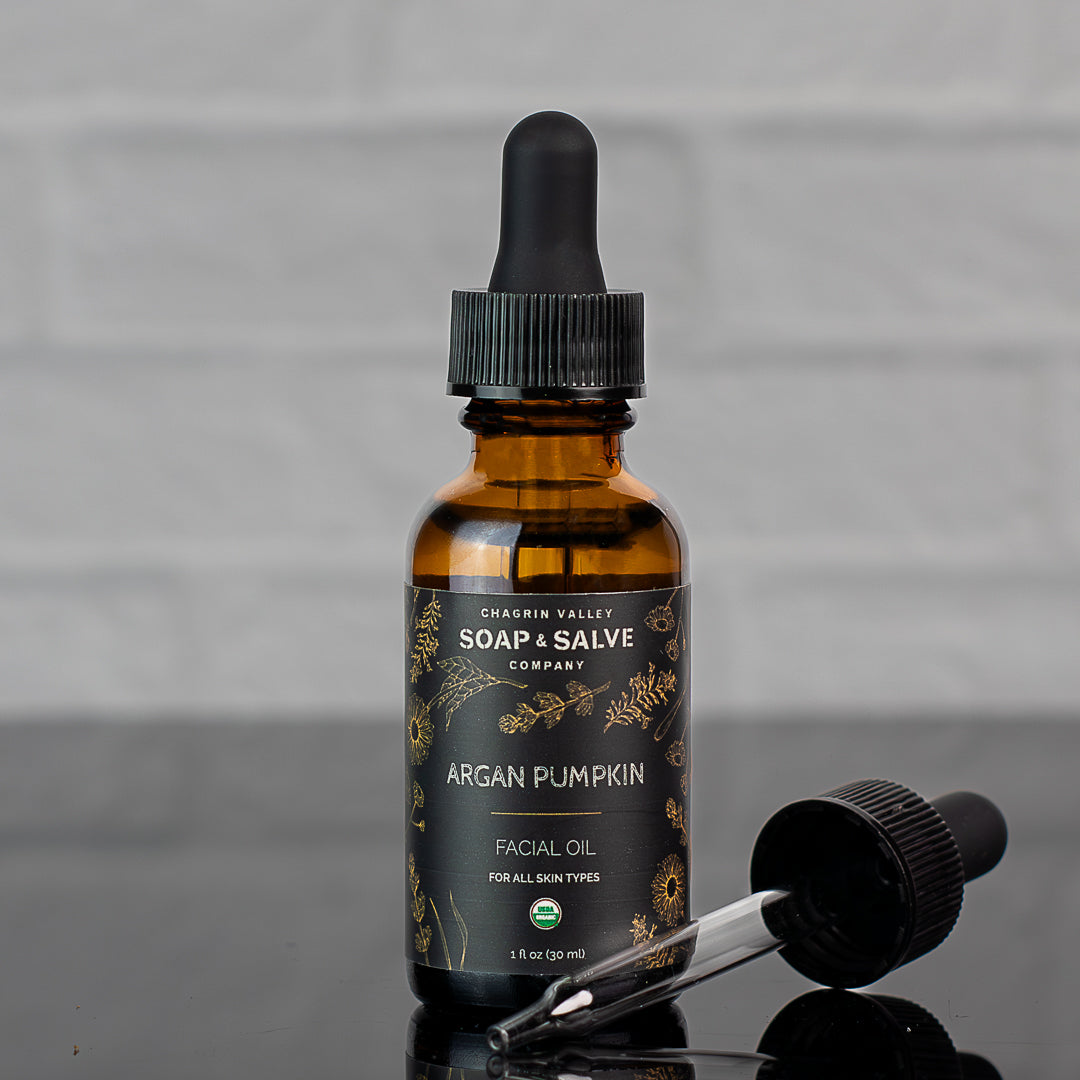
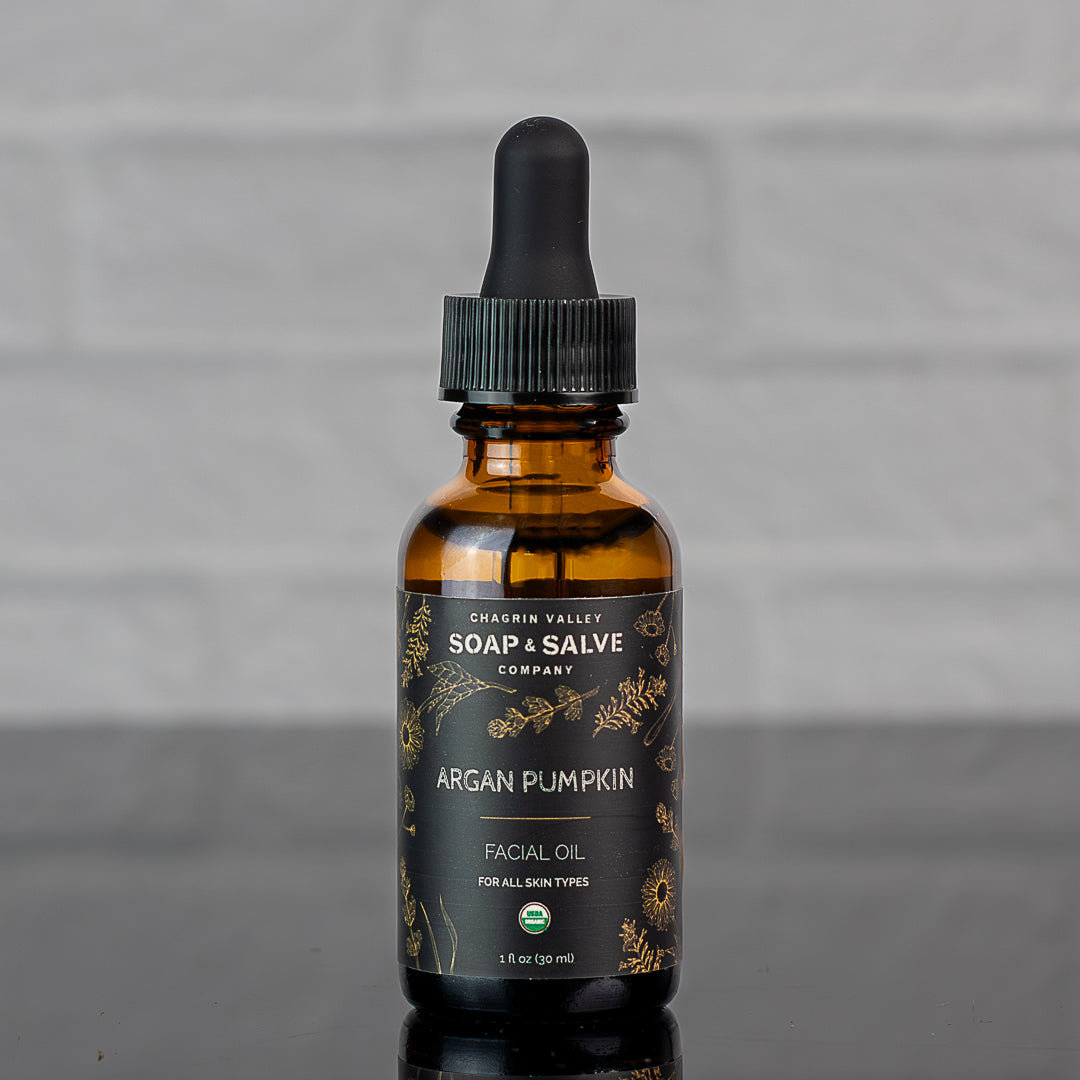
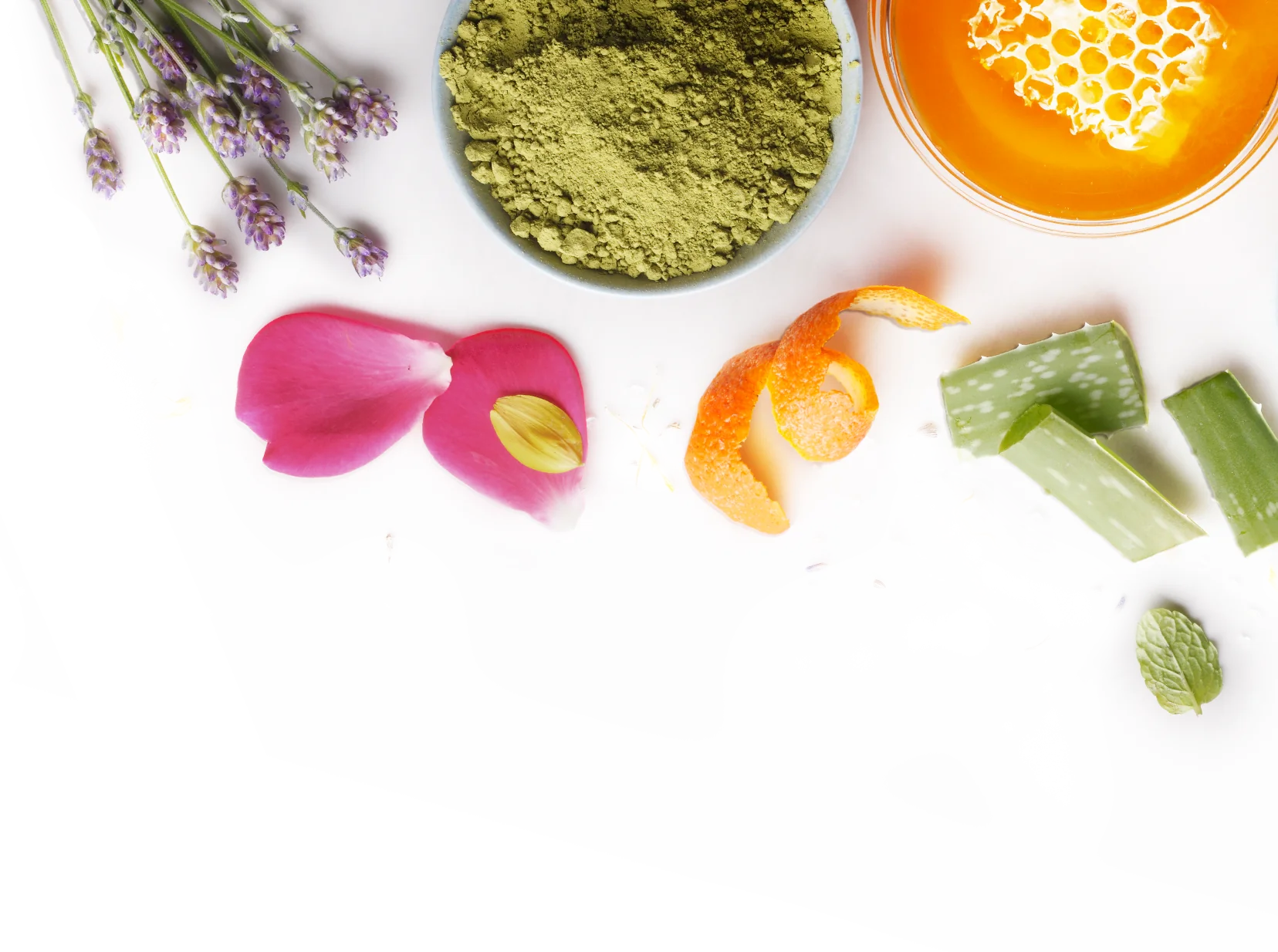
Ingredientes eficaces que te hacen sentir bien
El objetivo es simple: ¡aprovechar el poder y la simplicidad de la Naturaleza® para limpiar, calmar, sanar y proteger tu piel y cabello!
Nuestras fórmulas únicas se basan en aceites y mantecas hidratantes, ingredientes botánicos curativos y aceites esenciales puros. Seleccionamos cada ingrediente con un único objetivo: ¡el MEJOR cuidado natural de la piel para TI!
Ingredientes destacados


Organic Aceite de semilla de calabaza
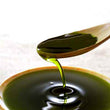
Organic Aceite de tamanu
All Ingredients:
Organic Sunflower Oil infused with Organic Botanicals Calendula, Plantain, Elder Flowers, Marshmallow Root, Mullein & St. John's Wort
Organic oils are unrefined and have not been bleached or deodorized. These oils retain their natural scent, color, and nutritional benefits.
Preguntas frecuentes
¿Cuál es mi tipo de piel?
Tu piel es tan única como tú.
Si lo piensas bien, tu tipo de piel no es el mismo en todas las zonas de tu cuerpo.
La piel de tu cara es diferente a la piel de tus manos, que es diferente a la piel de tu espalda, que es diferente a la piel de tus pies...etc.
Aunque tu tipo de piel está determinado por la genética, también se verá afectado por otros factores y puede cambiar con el tiempo.
Comprender su tipo de piel es un buen punto de partida antes de probar o cambiar a productos naturales.
Normalmente existen cinco tipos de piel sana: normal, seca, grasa, mixta y sensible.
PIEL NORMAL
Esta piel está equilibrada, ni demasiado seca ni demasiado grasa. Presenta una textura uniforme, sin imperfecciones y un aspecto limpio y suave, y no requiere cuidados especiales.
PIEL GRASA
La piel grasa es el resultado de la secreción excesiva de sebo, una secreción oleosa de las glándulas sebáceas. La piel grasa tiende a atraer más suciedad y polvo que la piel seca y puede ser propensa a puntos negros, acné y brillo excesivo. Es frecuente en adolescentes y suele presentarse en piel con acné o propensa a imperfecciones.
PIEL SECA
Para algunas personas, la piel seca es causada por factores externos como el clima, la baja humedad del aire, el sol o las duchas calientes y, a menudo, es temporal.
Sin embargo, para otras personas puede ser una afección de por vida. La piel seca se debe a una disminución de la producción natural de aceite, lo que a menudo resulta en una piel escamosa y áspera. La piel seca y agrietada suele ser propensa a trastornos cutáneos, como el eccema.
 PIEL SENSIBLE
PIEL SENSIBLE
La piel verdaderamente sensible reacciona fácilmente a los estímulos externos. Suele ser frágil, fina o de textura fina, seca y propensa a reacciones alérgicas.
La piel sensible suele sentirse incómoda, tirante, enrojecida o con picazón. Es una piel delicada que necesita mucho cuidado.
PIEL MIXTA
La piel mixta es tal como suena: tiene características tanto de la piel seca como de la grasa. La zona con más grasa suele ser la zona T (frente, nariz y barbilla), mientras que la piel de las mejillas es normal o seca.
Para obtener más información sobre el tipo de piel y ayuda con recomendaciones de productos para sus necesidades individuales, lea nuestro blog, ¿Cuál es su tipo de piel?
View Answer Page
¿Por qué debo ponerme ACEITE en la cara?
Ya sea que los llames " aceites faciales" o "sueros faciales", los aceites orgánicos nutritivos y sin refinar pueden hidratar, calmar y ayudar a restablecer el equilibrio natural de la piel del rostro.
Con la edad, nuestra piel pierde naturalmente la capacidad de retener la humedad. La piel del rostro tiende a adelgazarse y a perder elasticidad. Además, produce menos grasa, lo que significa que se reseca con mayor facilidad. Esto puede acentuar la apariencia de las líneas de expresión y las arrugas. Los aceites faciales pueden ayudar a prevenir la pérdida de agua y a mantener la piel tersa.
 Consejo de aplicación: Aplique el aceite facial inmediatamente después de lavar la piel y justo antes de cualquier otro humectante para retener el agua en la piel y sellar la humedad.
Consejo de aplicación: Aplique el aceite facial inmediatamente después de lavar la piel y justo antes de cualquier otro humectante para retener el agua en la piel y sellar la humedad.
Aunque muchas personas, especialmente aquellas con piel grasa o propensa al acné, tienden a evitar la hidratación a base de aceite, este puede ser un paso muy importante en el cuidado diario de la piel. Un aceite facial orgánico ayuda a aumentar la hidratación de la piel y a prevenir una mayor pérdida de hidratación.
Piel grasa
Si tienes la piel grasa, los aceites orgánicos nutritivos pueden ayudar a imitar el sebo natural de la piel, que a su vez envía señales a las células productoras de aceite que dicen: "Hola, mi piel está hidratada, así que deja de producir aceite".
Utilizando productos creados para “secar” la piel grasa, Intentar eliminar el brillo graso activa las glándulas sebáceas para que produzcan más grasa, lo que agrava el problema de la piel grasa. Una crema hidratante completa ayuda a equilibrar la producción de grasa.
Piel seca
Si tienes la piel seca, un aceite facial orgánico elaborado con aceites botánicos sin refinar crea una barrera protectora pero transpirable que retarda la evaporación de la humedad y, por lo tanto, ayuda a retener la humedad.
Piel irritada
Un aceite facial natural es ideal para pieles sensibles e irritadas. A veces, una hidratación adecuada por sí sola puede ayudar a calmar la inflamación y aliviar la piel enrojecida e irritada.
Piel madura
Es especialmente importante para quienes (como yo) tienen la piel madura mantener el rostro adecuadamente hidratado para ayudar con las líneas de expresión y las arrugas. Con la edad, los aceites naturales de la piel disminuyen, esta se reseca con mayor facilidad y las arrugas se acentúan. Un aceite nutritivo ayuda a prevenir la pérdida de agua y a nutrir la piel.
Lo principal es asegurarse de que estás usando el tipo correcto de humectante.
Los aceites faciales más nutritivos son aquellos elaborados con aceites vegetales orgánicos certificados y sin refinar. Estos aceites se obtienen mediante prensado en frío o por expulsor.
Se procesan mínimamente sin productos químicos bajo condiciones de temperatura controlada, lo que garantiza un aceite natural rico en nutrientes y de alta calidad.
Certificado como orgánico por el USDA significa que los aceites botánicos están libres de aditivos sintéticos, pesticidas y conservantes.
Manténgase alejado de los productos a base de petróleo que contienen aceites minerales que obstruyen los poros y causan brotes.

¿Qué son los aceites faciales naturales?
Creación de una rutina de cuidado facial
¿Qué es un aceite limpiador facial? ¿Cómo se usa?
View Answer Page
¿Los ingredientes y productos de Chagrin Valley están certificados como orgánicos por el USDA?
Chagrin Valley Soap & Salve es una empresa orgánica certificada por el USDA

La consideración más importante en cualquier negocio son sus clientes. El mundo actual, plagado de afirmaciones engañosas, publicidad engañosa y simple engaño, a menudo deja a los consumidores intentando descubrir la verdad sobre los productos personales y sus ingredientes.
- Queremos que nuestros clientes sepan que estamos comprometidos con la transparencia en todo lo que hacemos.
- Queremos que nuestros clientes sepan que cuando decimos “ orgánico”, lo decimos en serio.
- Creemos que al convertirnos en una empresa orgánica certificada por el USDA, nuestros clientes no tienen que preguntarse si realmente utilizamos ingredientes orgánicos certificados o si nuestros productos orgánicos son verdaderamente orgánicos.
- Por eso elegimos ser una empresa orgánica certificada y cumplir con los estrictos estándares requeridos para la certificación orgánica.
Algunos de mis productos favoritos están elaborados con ingredientes que simplemente no cuentan con certificación orgánica. ¿Por qué? Actualmente no existen estándares para los ingredientes utilizados específicamente en la industria de productos de cuidado personal. La certificación orgánica de productos de cuidado personal se basa en los estándares de alimentos orgánicos establecidos por el Programa Nacional Orgánico del USDA.
Pero como somos una empresa orgánica certificada, estamos obligados a presentar documentación que acredite que incluso nuestros "ingredientes no orgánicos" se produjeron sin el uso de pesticidas tóxicos, organismos genéticamente modificados (OGM), lodos de depuradora o irradiación.

¿Por qué nos convertimos en una empresa orgánica certificada?
¿Qué significan todas las etiquetas orgánicas?
View Answer Page
¿Los productos de cuidado natural de la piel de Chagrin Valley contienen OGM?
Chagrin Valley Soap & Salve es una empresa orgánica certificada por el USDA.
Estamos obligados a presentar documentación de que TODOS nuestros ingredientes, incluso nuestros "ingredientes no orgánicos", se produjeron sin el uso de OGM.
Dado que el Programa Nacional de Productos Orgánicos de Estados Unidos prohíbe el uso de modificaciones genéticas en productos que se certificarán como orgánicos, comprar productos orgánicos es una excelente forma de reducir su exposición a los OGM.
Los organismos genéticamente modificados (OGM) se refieren a cualquier animal, planta o microorganismo modificado genéticamente en un laboratorio. También se conoce como "ingeniería genética".
Lea más sobre "Ingredientes para el cuidado de la piel sin OMG"
View Answer Page
